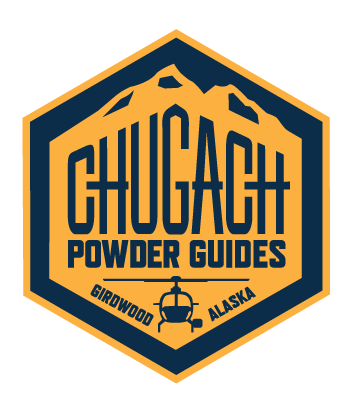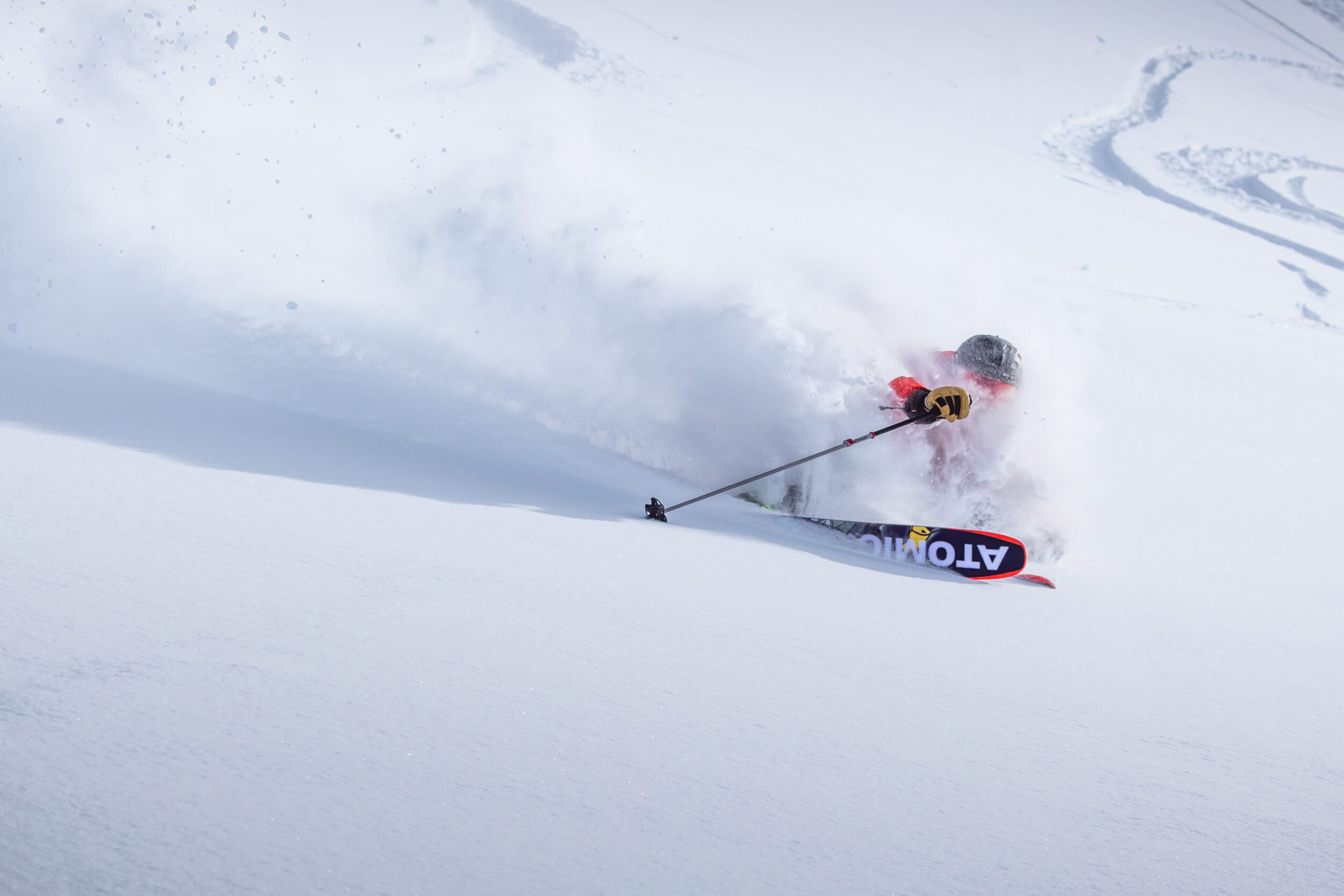Here in the Chugach we love to use ultra-wide skis. When we’re stocking our demo fleet and guide skis, we try to buy skis that are 120mm – 135mm underfoot. There’s a variety of reasons we prefer such wide skis, but many guests are overwhelmed at the idea when they’re used to far narrower options back home, even for powder.
The Chugach mountains are known for wide-open terrain and lots of snow. Most of the skiing we do here is above treeline. In this expansive terrain it’s common to make fewer turns than you’re used to. Oftentimes these descents are big, planar slopes and bowls with few obstacles to avoid. It makes for some of the fastest and funnest skiing imaginable, but it can also be a leg burner. With the bigger skis, it’s easier to let the ski do some of the work. This sounds counterintuitive because big skis can feel like more work at the ski resort, but backcountry conditions in Alaska warrant a different approach. Obviously the width will help you float up higher in the powder, but it also provides a lot of stability at speed. This can come in very handy on certain runs that have long, flat runouts. The big skis will keep you moving across the flatter areas so you can reach the pick-up zone with less effort.
The big skis also do a great job of keeping you off the rocks. Unlike at a ski resort, the hazards out in the backcountry are unmarked, and it’s not uncommon to have rocks lying just below the surface. This is especially true near ridgelines where we land the helicopter. We often find ourselves negotiating these rocky ridelines as we enter a run. With ultra-fat skis you are much less likely to strike a rock when transitioning off the ridge and into the run itself.
Occasionally when we are heli skiing we encounter breakable crust and other variable conditions. While we avoid these types of conditions as much as possible, you may find yourself navigating a crust on the top or bottom of a run because conditions can be elevation-dependent. Sometimes we ski an entire run of powder, but in order to get to a flat spot where the heli can land, we may need to descend through a crust for a few hundred feet. These ultra-wide skis perform far better in breakable crust than narrower options.
Another factor to consider is the sheer amount of skiing we do with a heli. Our standard day is 16-18K of vert. While this may not be an extreme amount for a ski resort, it adds up when almost all of the turns are in powder. Add to this the loading and unloading of the helicopter, dealing with gear, and wearing a backpack all day, and heli skiing can feel like a lot of work. The wider skis will absolutely help your longevity throughout the day. Us guides that heli ski day-in and day-out always use ultra-wide skis because it saves energy.
For guests that have never ridden a ski wider than 110 mm, there is always some hesitation. We understand the concern. When you are spending a lot of money for your big day, you want to ski your best and not worry about equipment. We also want you to succeed and maximize your investment. In our experience, getting on fat skis for the very first time really is not a problem. Our ski recommendations come from many years of experience both skiing all types of skis, and putting guests on all types of skis. The evidence speaks for itself, so we aren’t shy about putting almost anyone on fat skis.
This certainly doesn’t mean you need ultra-wide skis. Many guests prefer to use what they know and love, and we don’t discourage that. Some people’s style lends itself to a narrower ski, and some guests have done plenty of powder skiing and know what they prefer. But if you ask for our recommendations, we’re going to point you towards the ultra-wides every time.

